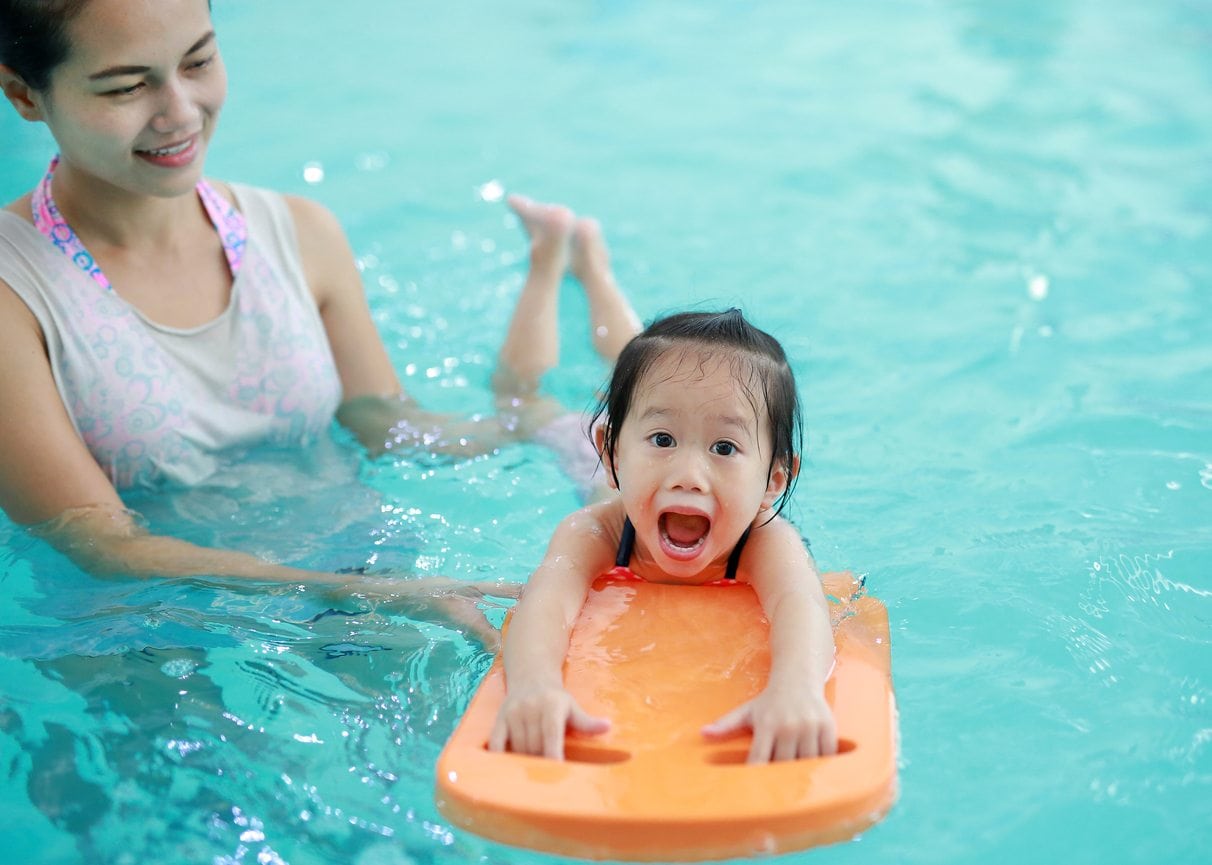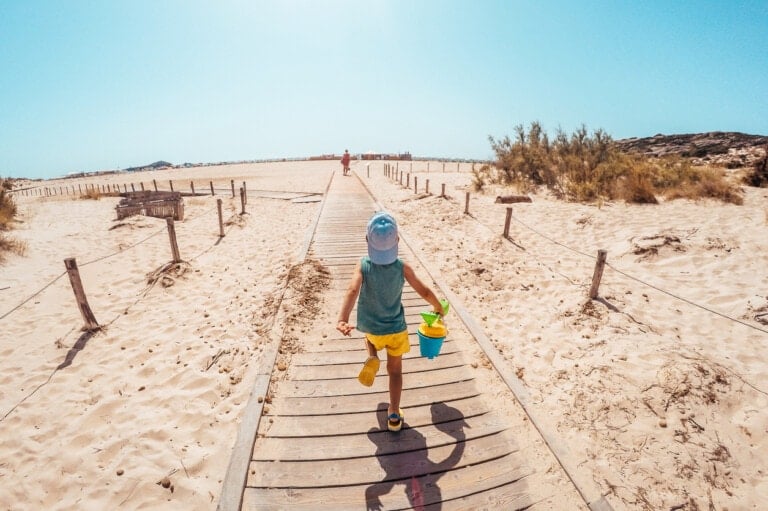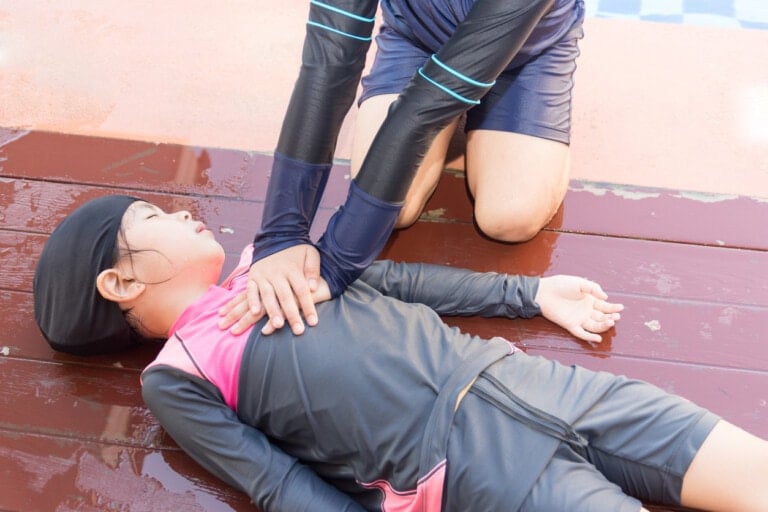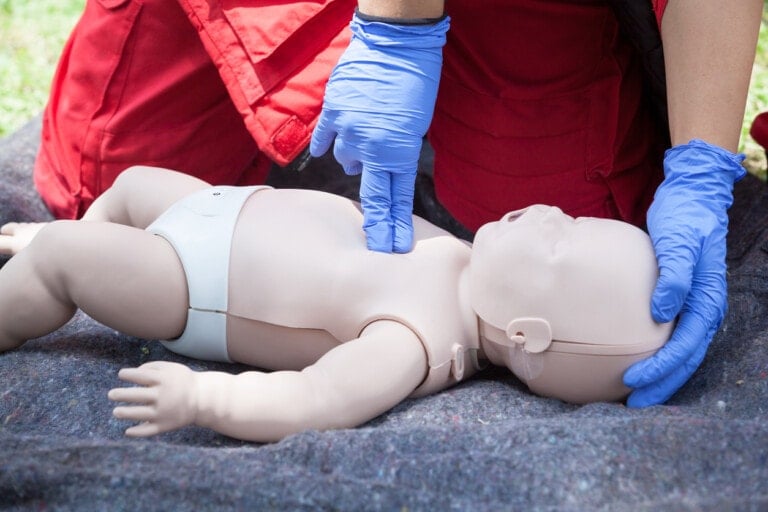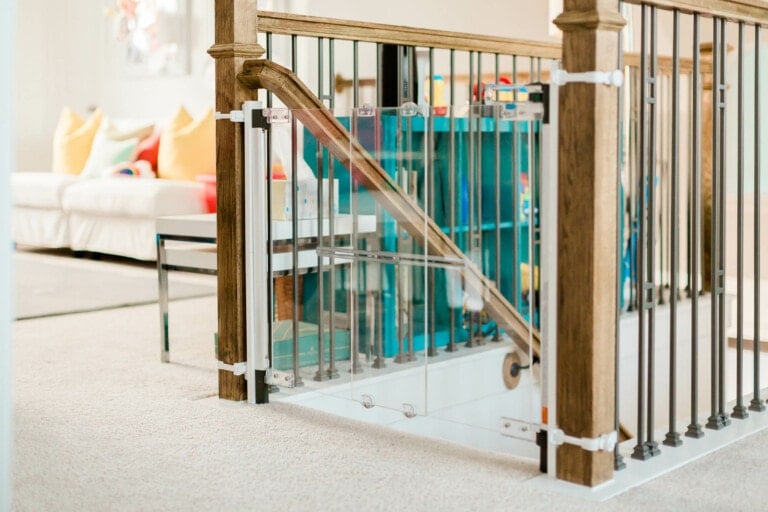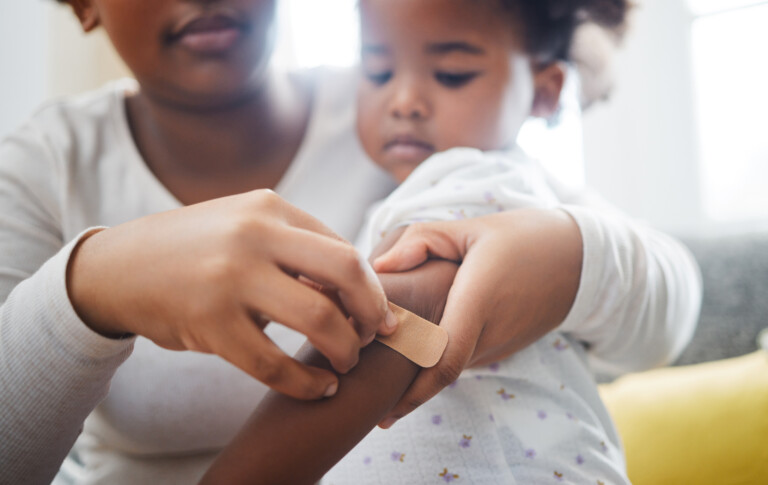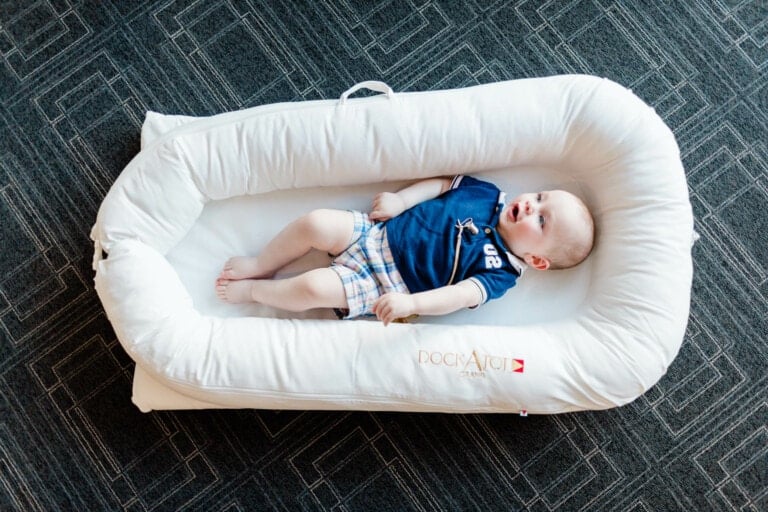I thought I was doing my first son a service when we taught him to be scared of drowning. Every time he would get near a pond or pool, we would warn, “You better not go near that! You might drown!” This “water safety” method proved effective for keeping him away from water, but when he turned four and we decided he was old enough to learn to swim, we knew we had created a water monster. He was terrified. We quickly learned that we taught him to think the water was bad to keep him water safe.
And that proved to make teaching him to swim very challenging. He never wanted to put his head underwater or learn to float on his back. Then, one day, he got brave and jumped in without floaties, and I had to dive in and pull him out. This only reinforced his fear of water. And convinced me teaching a child to swim was nearly impossible! Once he finally learned to swim, I realized I would not make the same mistakes with my next sons.
Water Safety Tips for Young Children
Here’s what I would recommend as my favorite water safety tips for teaching children to swim and making the pool safe!
1. Start Water Exposure Young
Babies aren’t born with a fear of water but can develop one as they grow without exposure. So getting them swimming with you or in lessons early is wise. Get them used to putting their head in and blowing bubbles early. This way, they don’t even know to be scared. Enrolling them in a Mommy and Me swim class is a perfect way to start!
2. Set Boundaries with the Water, But Don’t Make Water Bad
It would be best to teach your children to avoid pools. But be careful to monitor your language with these warnings because they need to know water is good but not safe until they learn to swim. “We don’t get in the water until we know how to swim! Are you ready to go to swim lessons?” This makes them see the boundary but understand that swimming makes water fun.
3. Find the Right Swimming Lesson For You
Survival Swim
This technique only exists in some larger cities and towns, but this tends to be a quick, week-long method where one instructor teaches children ages infant through age 5 how to fall in, flip on their backs, and swim to the side.
The plus side of this technique is that your child safely knows how to fall in and get to the side by the end of the week. The downside is that if your child is young, they tend to cry throughout the training. It’s not always pretty because they don’t understand what they’re learning. We did this method with all my sons at ages 2, 3, 6. And I learned that once they are old enough to talk and comprehend, it’s my favorite method because it is quick and effective. But for a two-year-old, it can be emotional. However, if I had a pool in my backyard, I would say this method is a must!
Infant Swimming Resource (ISR)
This specific type of survival swim was founded nationwide in 1966.1 It is a longer but more detailed approach to learning to swim, allowing kids to learn over six weeks with short increments of swimming daily. (Weekends not included.) It involves eating a special diet and leading kids along a specific swimming progression where they can get to the side and float by the end of the six weeks.
Traditional Group Swim Lessons
Traditional swim lessons are a great way to learn to swim if a parent has time and money to invest in the process. We started my son at a swim academy when he was three. Many kids in his class had been going since they were infants and were swimming well. If you have time, this method is excellent. But if you are trying to get a child water-safe in a shorter timeframe, this may not be right for you.
Private Instructor
After survival swim, we hired a private swim instructor to meet with our toddler. And this is where we saw impressive advancement quickly. Since he entered lessons already knowing how to fall in and float on his back, she was able to use any skill he was willing to show her to advance his abilities instead of following a specific formula like group lessons typically require. This allowed him to improve rapidly.
4. Consistency is Key
Once your child has learned to swim or has learned a swimming skill, it is important to keep your child in the water. Children advance the fastest and get the safest when you consistently let them build on their skills. If they learn to jump in and swim to the side but then are out of the pool for six months, they will likely lose that skill. For purposes of remaining safe, consistency is key!
5. Hire a Babysitter if You’re Outnumbered
Even though I have three swimmers now, the public pool sometimes makes me worried that someone could still get pulled under or jumped on. Last summer, I decided it was worth asking an extra person to come along to help out. There is always the option of hiring a sitter to accompany you, but it’s also possible to ask if a neighbor or preteen wants to come along just to play. They often can keep an eye on older ones while still having fun.
6. Ask for Extra Eyes if You’re in a Busy Setting
We went to a pool party last summer and several children were swimming all at once. I was at the pool with all four of my children, including my new preschool swimmer and baby. I intentionally asked my neighbors to help me keep a watch on the boys. That way, if I did turn away at the wrong moment, they would see something, too.
7. Set Firm Water Rules
When you have a new swimmer, it’s important to let others know the child is a new swimmer. Children tend to like to horse around in the water, so I always remind older children not to tug or pull on the newer swimmers.
8. Before They Play, Ask About the Pool
We live in a warm climate and many of our friends and neighbors have pools. I’ve learned it’s important to ask parents if they have a pool before my child goes to play. If they say yes, I ask if the back door is locked and if they have something to keep kids out of the pool, like a fence or cover. I then remind my child that pools are not a place we play or explore without adults.
9. Review CPR
Every summer, I try and review what to do if someone did end up in the water without a floatie. Yes, I don’t want to imagine anything ever happening. But I also know that if something does happen, I want to be prepared. Here are resources in addition to these water safety tips you might find helpful:
- How to Save a Drowning Child
- Child Water Rescue Breathing
- How to Perform Toddler CPR
- How to Properly Perform Infant CPR
What are some of your favorite water safety tips? We would love to hear!













